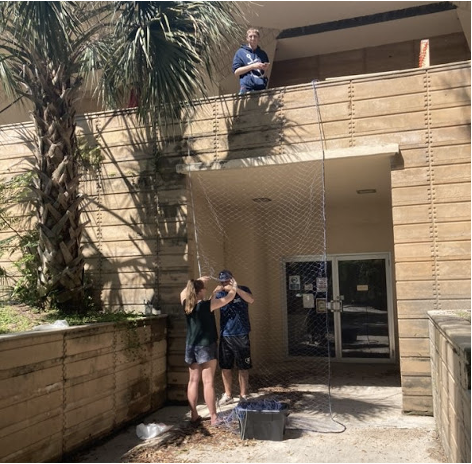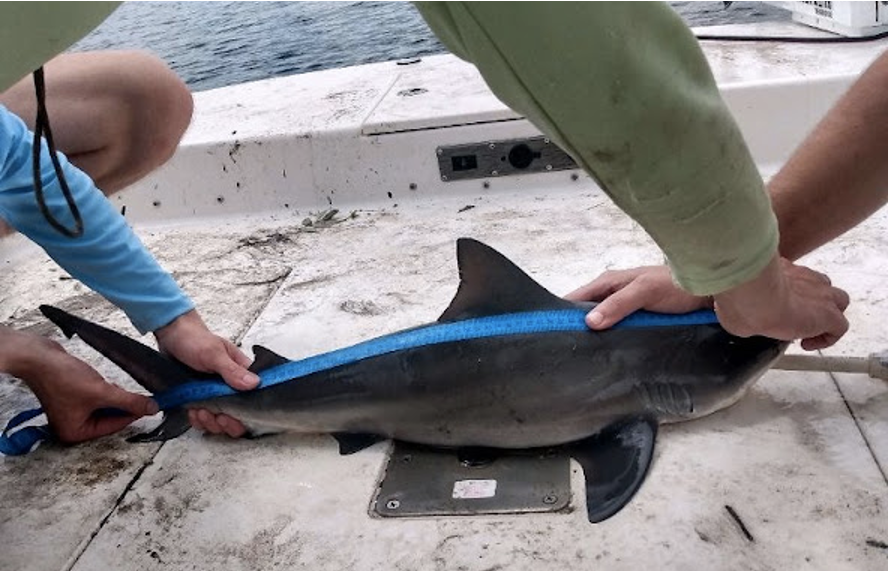Author: Catherine Fox, Marine Biology & Environmental Science Student, Florida Southern College; Advised by Dr. Gabriel Langford

Picture this: it’s winter 2021, covid has been a pandemic for nearly a year now. The research project I was supposed to do last summer was canceled due to covid and now I’m searching for something for next summer. I’ve applied to what seems like hundreds of places (when maybe it was only ~20) and haven’t been accepted to any. I can’t spend another summer at home waiting for something to come my way, so I keep searching. Then, one day, I get an email from my professor asking if I would be interested in working with sharks over the summer. Of course, I’m interested! I tell her I have experience operating and docking boats of various sizes and I’ve been saltwater fishing since I was young. Next thing I know, I’m accepted to participate in summer research! The plan is to take out the brand-new boat a couple times a week and capture bonnetheads, bull sharks, and blacktips. By the time May rolls around I’m so excited to get out on the water. But as with most research, there were many hiccups along the way. First, the boat wasn’t ready. Then we couldn’t get someone to drive it down to Tampa. Then there were issues with the insurance. As days bled into weeks, we tried to keep ourselves busy. We learned how to mend the nets, set up camera traps, and spent many hours cleaning and organizing labs in the science building.

Finally, the day had come! The boat was ready, it was in Tampa at the marina, and it was finally insured. We met at the crack of dawn, yawning, and stretching out the kinks in our bodies as we loaded the van with all our equipment. The car ride was filled with excited chatter as we talked about what the day would hold. It was a beautiful day, and the sun was shining brightly in the sky. We caught one juvenile bull shark that day, but it died. We were saddened by this, and our excitement evaporated quickly. When we got back, we practiced the workup on our fake blow-up shark so we could be faster and more confident next time. We also mended the holes in the net (at this point I didn’t realize just how many hours that summer would be spent mending those holes).

We got faster and faster over the next few weeks and caught over a dozen sharks. Then a massive red tide bloom started killing everything. Thousands and thousands of dead fish floated on the water, leaving a putrid stench to the air. All the rays that we had been catching were dead and there was no sign of the sharks. Day after day we went out searching for them but we didn’t find them. We thought this was the end. We wouldn’t catch anything else, maybe we should change our research project? But late July we decided to go out once more just to make sure. And thank goodness we did! That day we caught a record number of sharks in one gill net!

We only caught more from that point on. Bull sharks made the return and shortly after cownose rays did. But we never saw another southern stingray. I wonder if they all died or if some were able to survive? Maybe they went upriver or left the bay. I guess we’ll never know. That summer was filled with so much fun, laughter, learning, and too many sunburns and even though things didn’t always go as planned, I wouldn’t trade it for anything.

